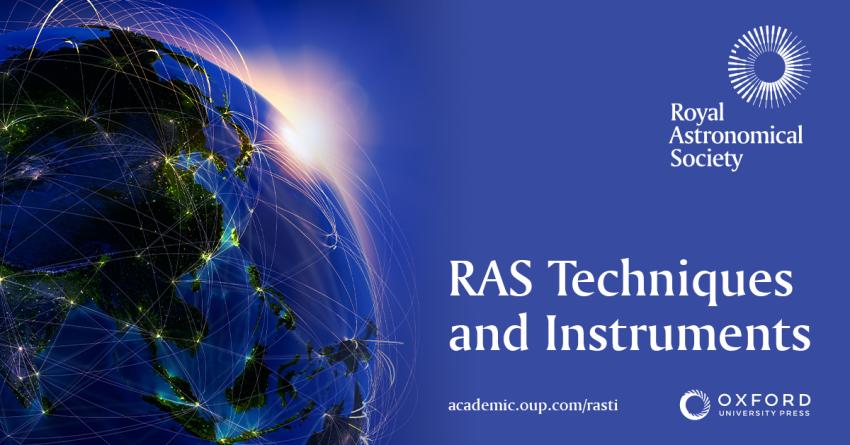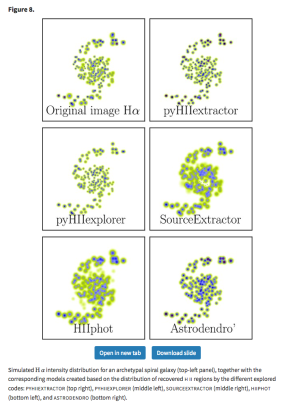The first paper in our new open access journal, RAS Techniques and Instruments (RASTI), has now been published online: https://academic.oup.com/rasti/article/1/1/3/6651147
The paper, by Lugo-Aranda et al, describes a new code, PYHIIEXTRACTOR, which detects and extracts the main features (positions and radii) of clumpy ionised regions, i.e. candidate HII regions, using Hα emission line images.
The code provides the properties of both the underlying stellar population and the emission lines for each detected HII candidate. It also delivers an estimate of the diffuse ionised gas (DIG) component, independent of its physical properties, enabling the properties of the HII regions and the DIG to be separated out. The code is compared with similar tools and is considered to exceed their performance, particularly when working with faint and small regions.
First author, Alejandra Lugo-Aranda, commented: “I chose to send my article to RASTI as it is a specialised journal in the field, this gave me a pleasant, concrete and professional experience during the reviewing process, that I describe as constructive and enriching. My experience with journal staff has also been very enjoyable, they gave me technical support and answered my questions promptly. In summary, my most sincere congratulations for the great work you do and I will certainly continue to submit my articles with you.”
Editor-in-Chief of RASTI, Prof. Jonathan Tennyson, says: “After the work and time setting up the journal it is really exciting that we are now publishing papers. I have been struck by both the high quality of the papers received by RASTI and by the general enthusiasm for this journal expressed by the community in general. There seems to be wide recognition of the need for a journal such as RASTI which allows astronomers and geophysicists to give full details of their methods and to explore important techniques for data acquisition and analysis. Can I give my congratulations to Alejandra Lugo-Aranda and her co-authors on publishing the first paper in RASTI. I am sure it will be the first of many interesting and important contributions the journal will carry.”
Publishing manager, Dr Kim Clube, added: “I’m thrilled to see the first RASTI paper published online and look forward to seeing this journal grow as it takes its place alongside its sister journals Geophysical Journal International and Monthly Notices of the Royal Astronomical Society”.
RASTI provides a high-quality, open access forum for advancements in data methods, instrumentation and new theoretical and modelling developments, to further their contribution to the rich research environments in the fields of astronomy and geophysics.
Interested in submitting a paper? Read our Author Guidelines here: https://academic.oup.com/rasti/pages/general-instructions
Want to find out more about RASTI? Visit our website https://academic.oup.com/rasti to read the latest papers and to sign up for new paper alerts.




